
10 types of organizational structures (+ org charts for implementation)
Reading time: about 8 min
Topics:
What is an organizational structure?
An organizational structure outlines how responsibilities and roles are assigned and grouped throughout an organization.
At some point, you have likely seen an organizational chart for your company. And we can probably guess what it looked like.
The typical org chart looks like a pyramid, your C-level executives at the top with lines stretching down to middle management and finally staff-level employees.
But not every company functions best with a hierarchical organizational structure. Many types of organizational charts exist because many types of organizational structures exist.
In this post, we go through the 10 common types of org structures and reasons why you might consider each of them.
1. Hierarchical org structure
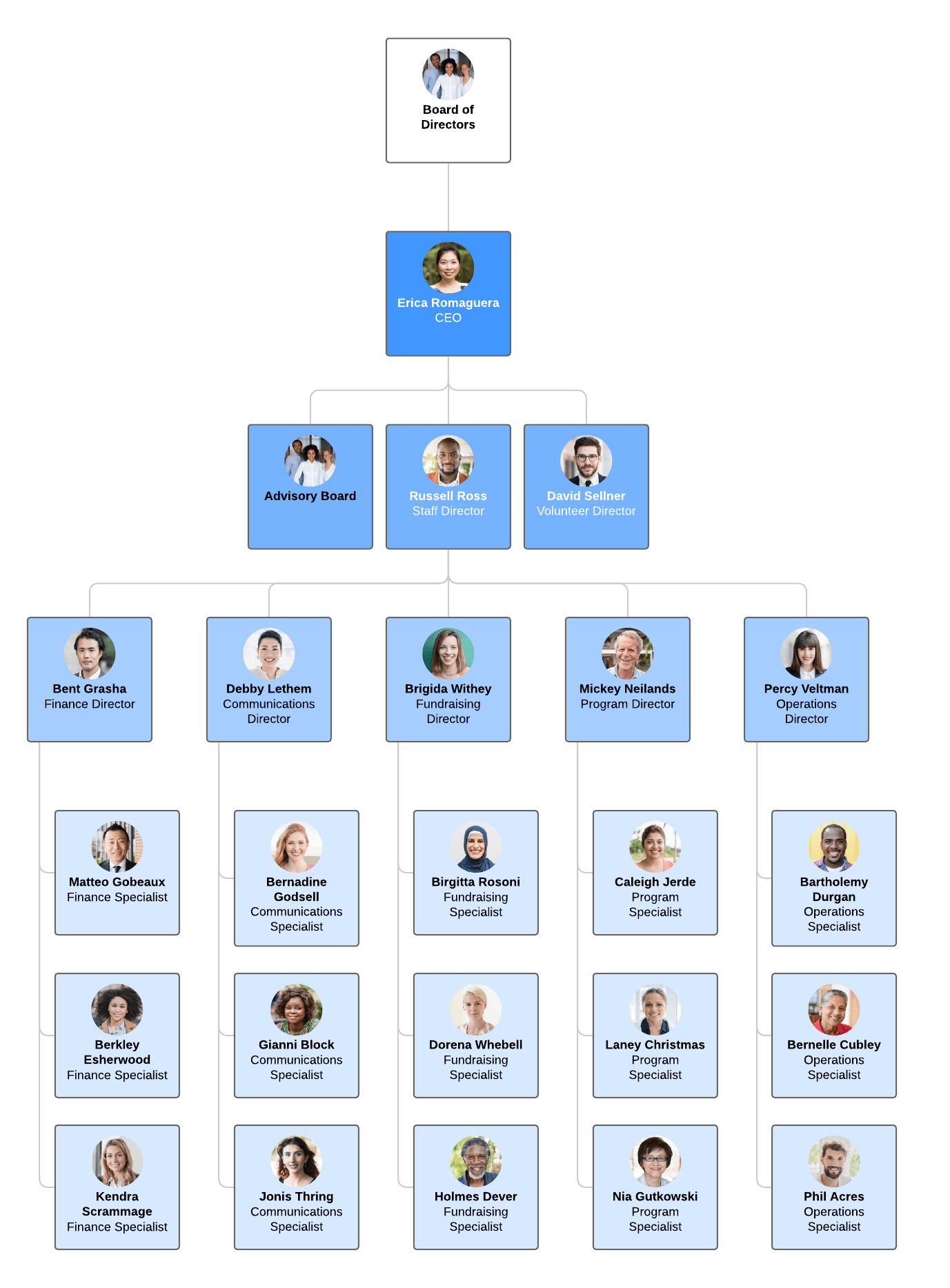
The pyramid-shaped organizational chart we referred to earlier is known as a hierarchical org chart. It’s the most common type of organizational structure—the chain of command goes from the top (e.g., the CEO or manager) down (e.g., entry-level and lower-level employees), and each employee has a supervisor.
Pros
-
Better defines levels of authority and responsibility
-
Shows who each person reports to or who to talk to about specific projects
-
Motivates employees with clear career paths and chances for promotion
-
Gives each employee a specialty
-
Creates camaraderie between employees within the same department
Cons
-
Can slow down innovation or important changes due to increased bureaucracy
-
Can cause employees to act in the interest of their department instead of the company as a whole
-
Can make lower-level employees feel like they have less ownership and can’t express their ideas for the company
2. Functional org structure
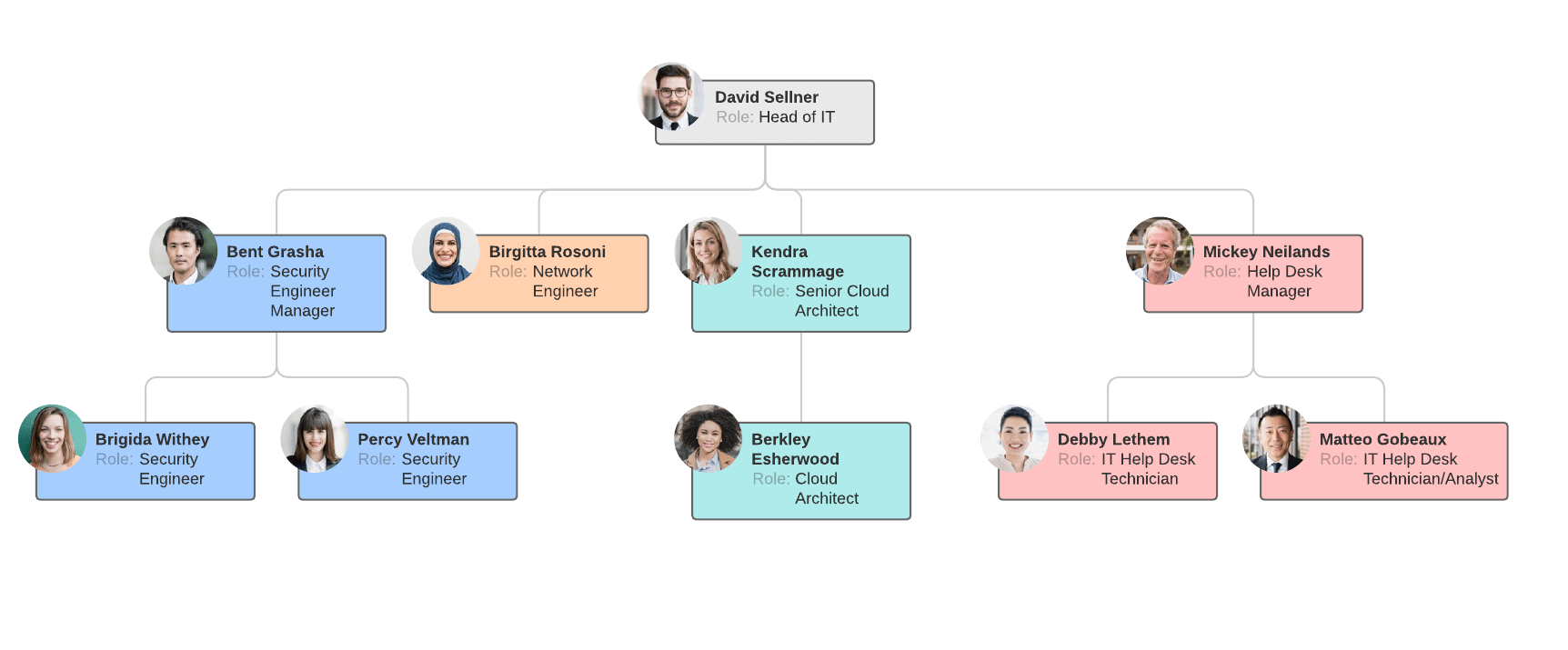
Similar to a hierarchical organizational structure, a functional org structure starts with positions with the highest levels of responsibility at the top and goes down from there. Primarily, though, employees are organized according to their specific skills and their corresponding function in the company. Each separate department is managed independently.
Pros
-
Allows employees to focus on their role
-
Encourages specialization
-
Help teams and departments feel self-determined
-
Is easily scalable in any sized company
Cons
-
Can create silos within an organization
-
Hampers interdepartmental communication
-
Obscures processes and strategies for different markets or products in a company
3. Horizontal or flat org structure

A horizontal or flat organizational structure fits companies with few levels between upper management and staff-level employees. Many startup businesses use a horizontal org structure before they grow large enough to build out different departments, but some organizations maintain this structure since it encourages less supervision and more involvement from all employees.
Pros
-
Gives employees more responsibility
-
Fosters more open communication
-
Improves coordination and speed of implementing new ideas
Cons
-
Can create confusion since employees do not have a clear supervisor to report to
-
Can produce employees with more generalized skills and knowledge
-
Can be difficult to maintain once the company grows beyond startup status
4. Divisional org structure
In divisional organizational structures, a company’s divisions have control over their own resources, essentially operating like their own company within the larger organization. Each division can have its own marketing team, sales team, IT team, etc. This structure works well for large companies as it empowers the various divisions to make decisions without everyone having to report to just a few executives.
Depending on your organization’s focus, there are a few variations to consider.
Market-based divisional org structure
Divisions are separated by market, industry, or customer type. A large consumer goods company, like Target or Walmart, might separate its durable goods (clothing, electronics, furniture, etc.) from its food or logistics divisions.
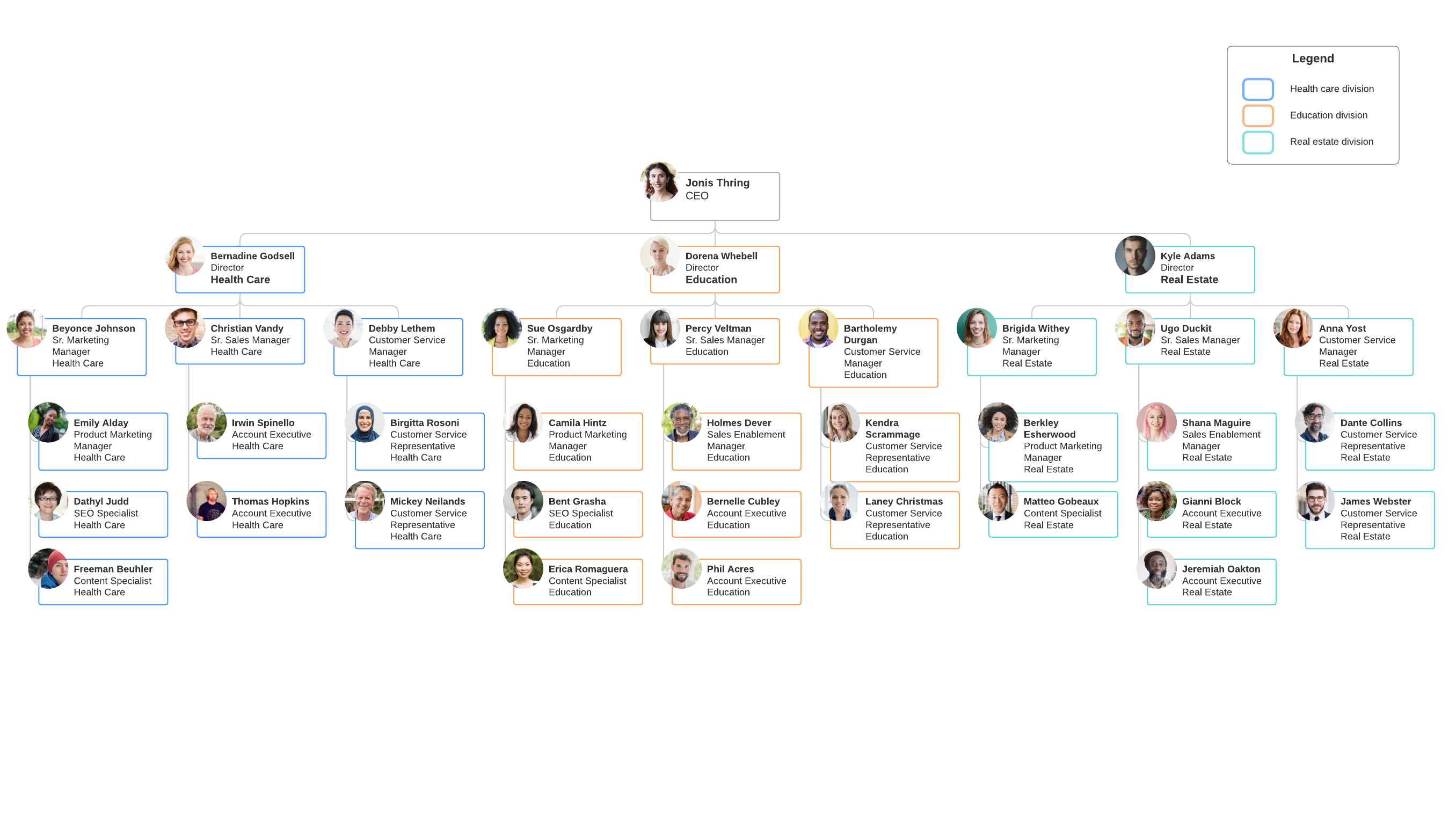
Product-based divisional org structure
Divisions are separated by product line. For example, a tech company might have a division dedicated to its cloud offerings, while the rest of the divisions focus on the different software offerings—e.g., Adobe and its creative suite of Illustrator, Photoshop, InDesign, etc.

Geographic divisional org structure
Divisions are separated by region, territories, or districts, offering more effective localization and logistics. Companies might establish satellite offices across the country or the globe in order to stay close to their customers.

Pros
-
Helps large companies stay flexible
-
Allows for a quicker response to industry changes or customer needs
-
Promotes independence, autonomy, and a customized approach
Cons
-
Can easily lead to duplicate resources
-
Can mean muddled or insufficient communication between the headquarters and its divisions
-
Can result in a company competing with itself
5. Matrix org structure
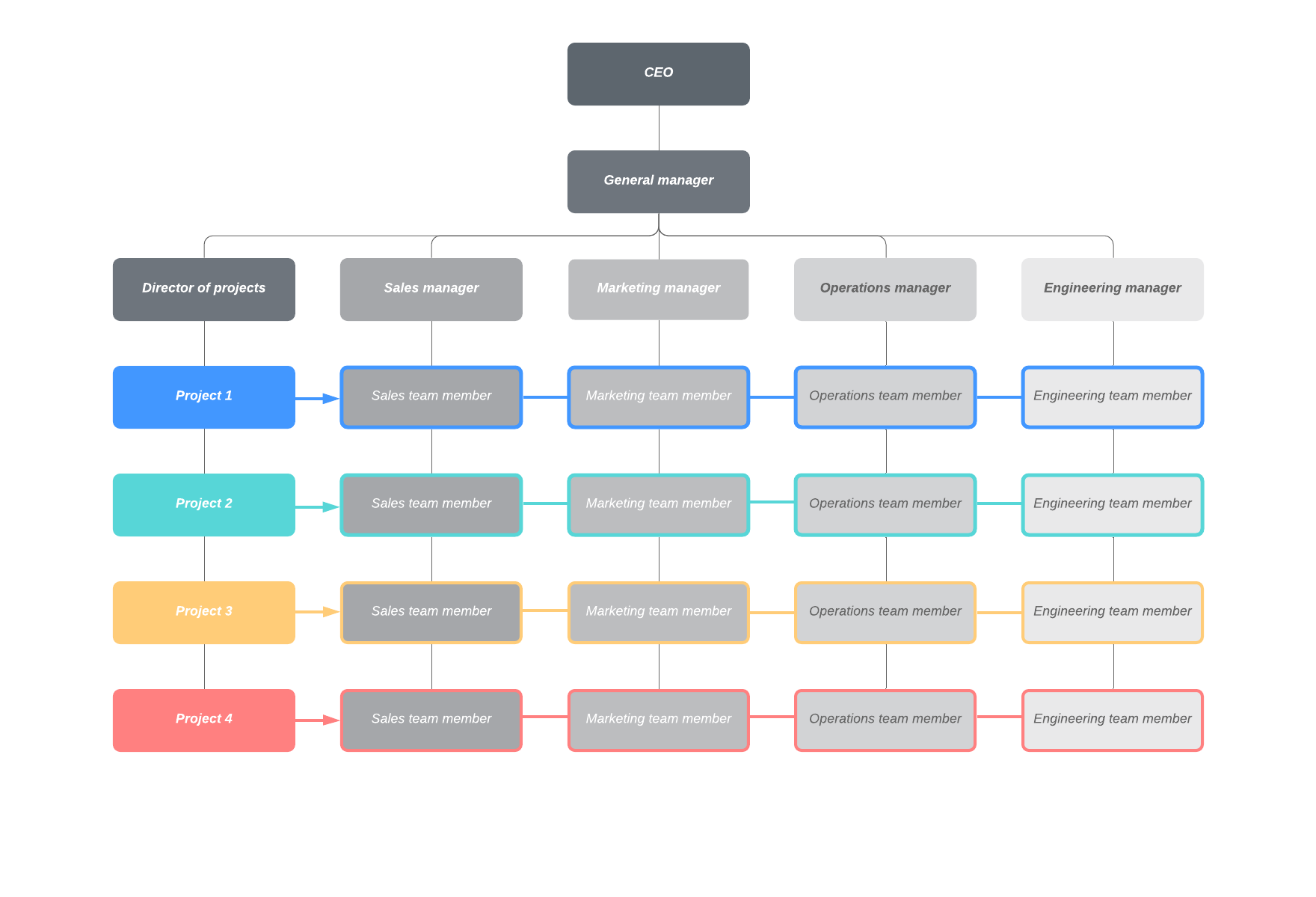
A matrix organizational chart looks like a grid, and it shows cross-functional teams that form for special projects. For example, an engineer may regularly belong to the engineering department (led by an engineering director) but work on a temporary project (led by a project manager). The matrix org chart accounts for both of these roles and reporting relationships.
Pros
-
Allows supervisors to easily choose individuals by the needs of a project
-
Gives a more dynamic view of the organization
-
Encourages employees to use their skills in various capacities aside from their original roles
Cons
-
Presents a conflict between department managers and project managers
-
Can change more frequently than other organizational chart types
6. Team-based org structure
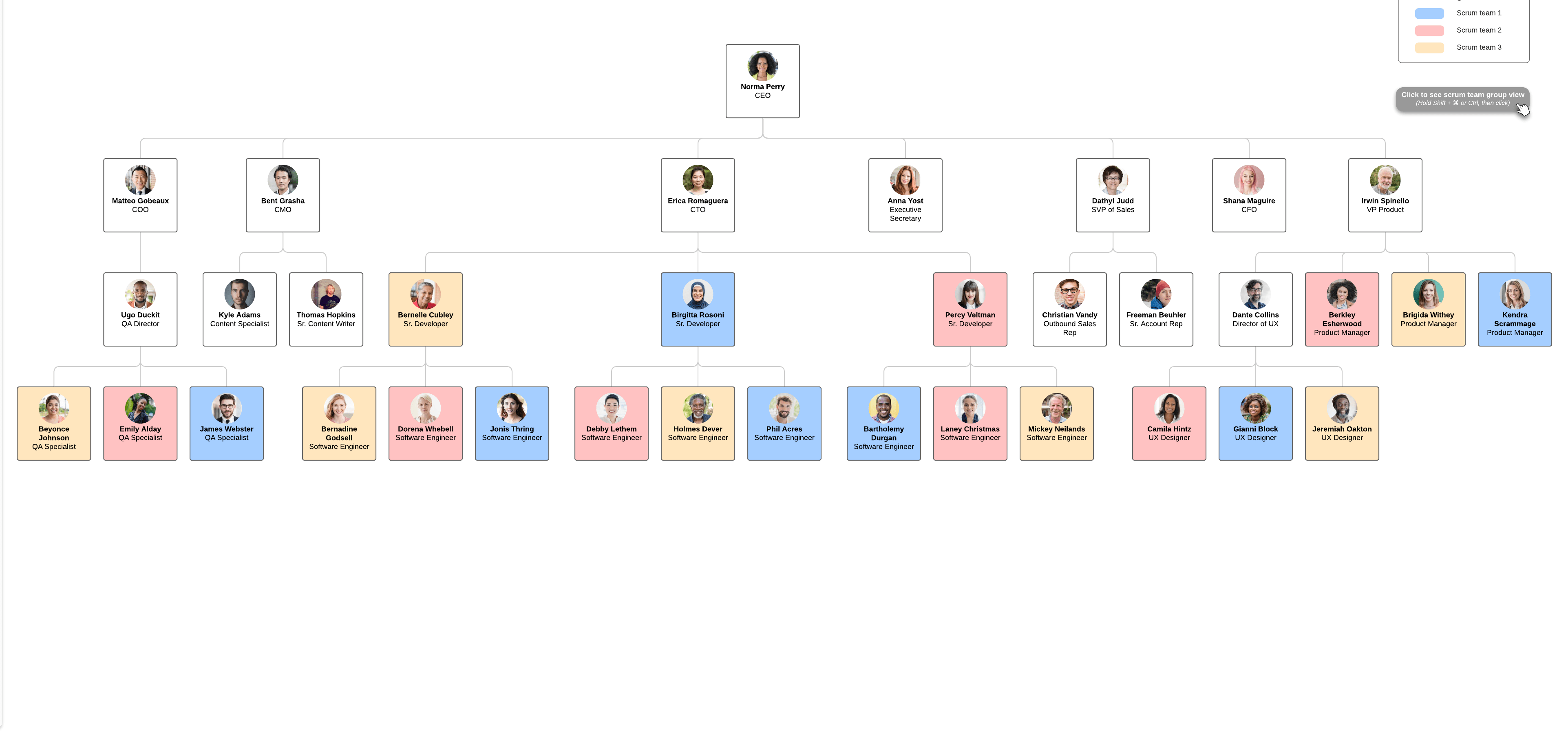
It’ll come as no surprise that a team-based organizational structure groups employees according to teams—think Scrum teams or tiger teams. A team organizational structure is meant to disrupt the traditional hierarchy, focusing more on problem-solving, cooperation, and giving employees more control.
Pros
- Increases productivity, performance, and transparency by breaking down silo mentality
- Promotes a growth mindset
- Changes the traditional career models by getting people to move laterally
- Values experience rather than seniority
- Requires minimal management
- Fits well with agile companies with Scrum or tiger teams
Cons
- Goes against many companies’ natural inclination of a purely hierarchical structure
- Might make promotional paths less clear for employees
See why forming tiger teams is a smart move for your organization.
Learn more7. Network org structure
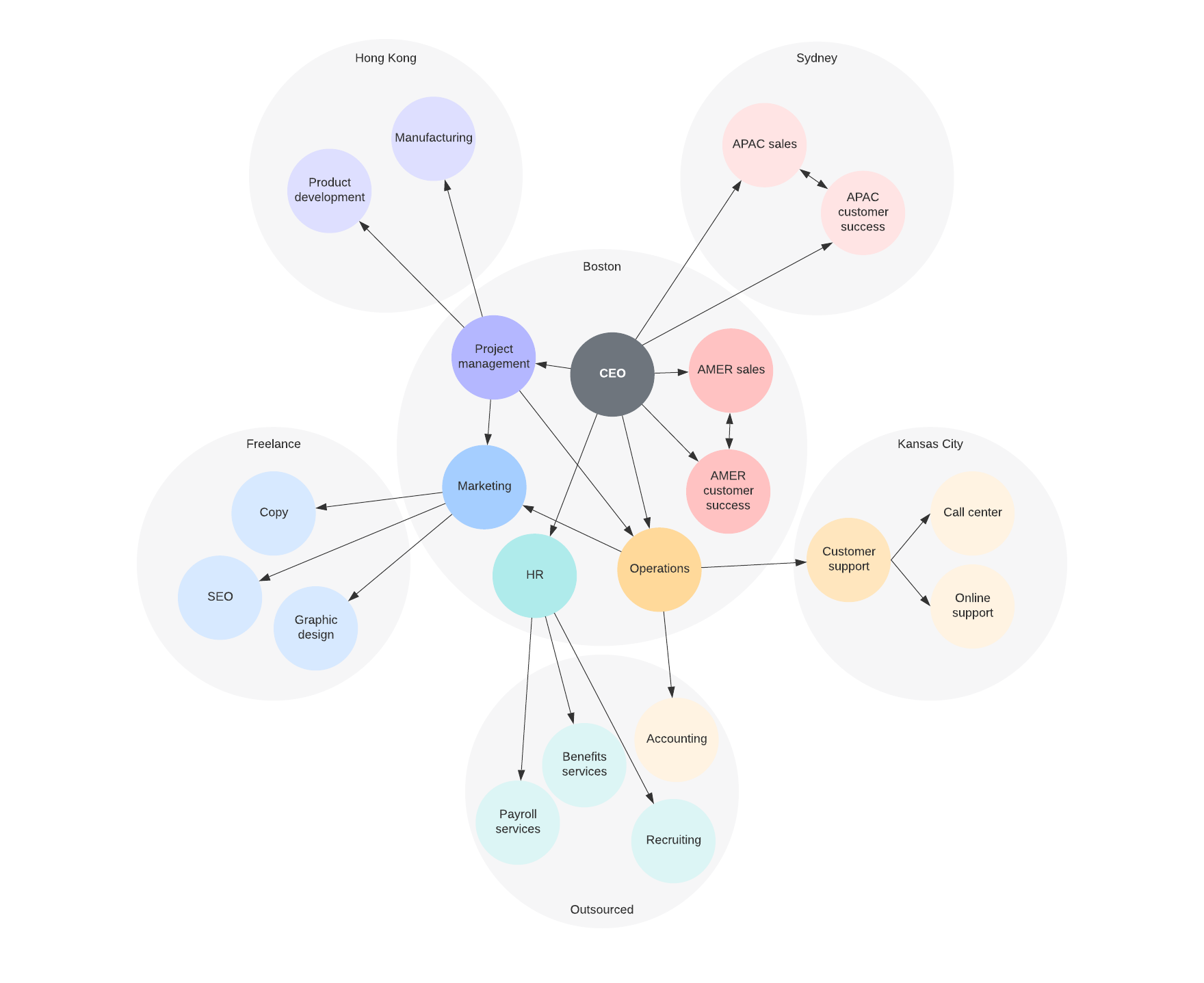
These days, few businesses have all their services under one roof, and juggling the multitudes of vendors, subcontractors, freelancers, offsite locations, and satellite offices can get confusing. A network organizational structure makes sense of the spread of resources. It can also describe an internal structure that focuses more on open communication and relationships rather than hierarchy.
Pros
- Visualizes the complex web of onsite and offsite relationships in companies
- Allows companies to be more flexible and agile
- Give more power to all employees to collaborate, take initiative, and make decisions
- Helps employees and stakeholders understand workflows and processes
Cons
- Can quickly become overly complex when dealing with lots of offsite processes
- Can make it more difficult for employees to know who has final say
Consider the needs of your organization, including the company culture that you want to develop, and choose one of these organizational structures.
8. Process-based structure
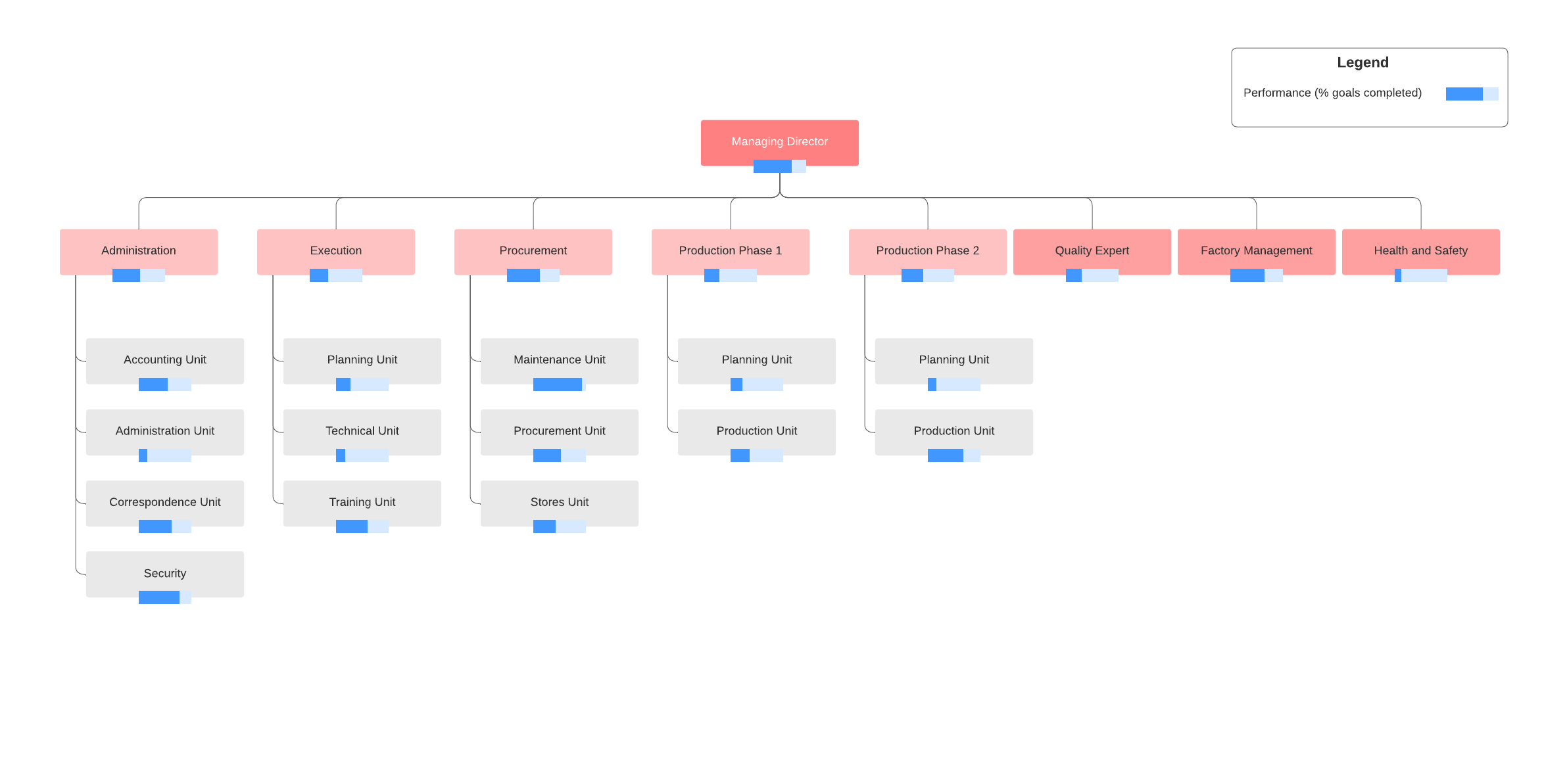
A process-based structure organizes employees into groups or departments based on steps of a process. The leader of the company is listed at the top, as they oversee all processes. Each step of the process has a supervisor and employees who do work in that process. The chart reads from left to right. One process can not begin until the process before it is completed.
Pros
- Can lead to faster and more efficient processes
- Promotes teamwork within departments and across departments
Cons
- Can lead to barriers between departments
- Can lead to miscommunication between departments, especially during handoffs
9. Circular structure
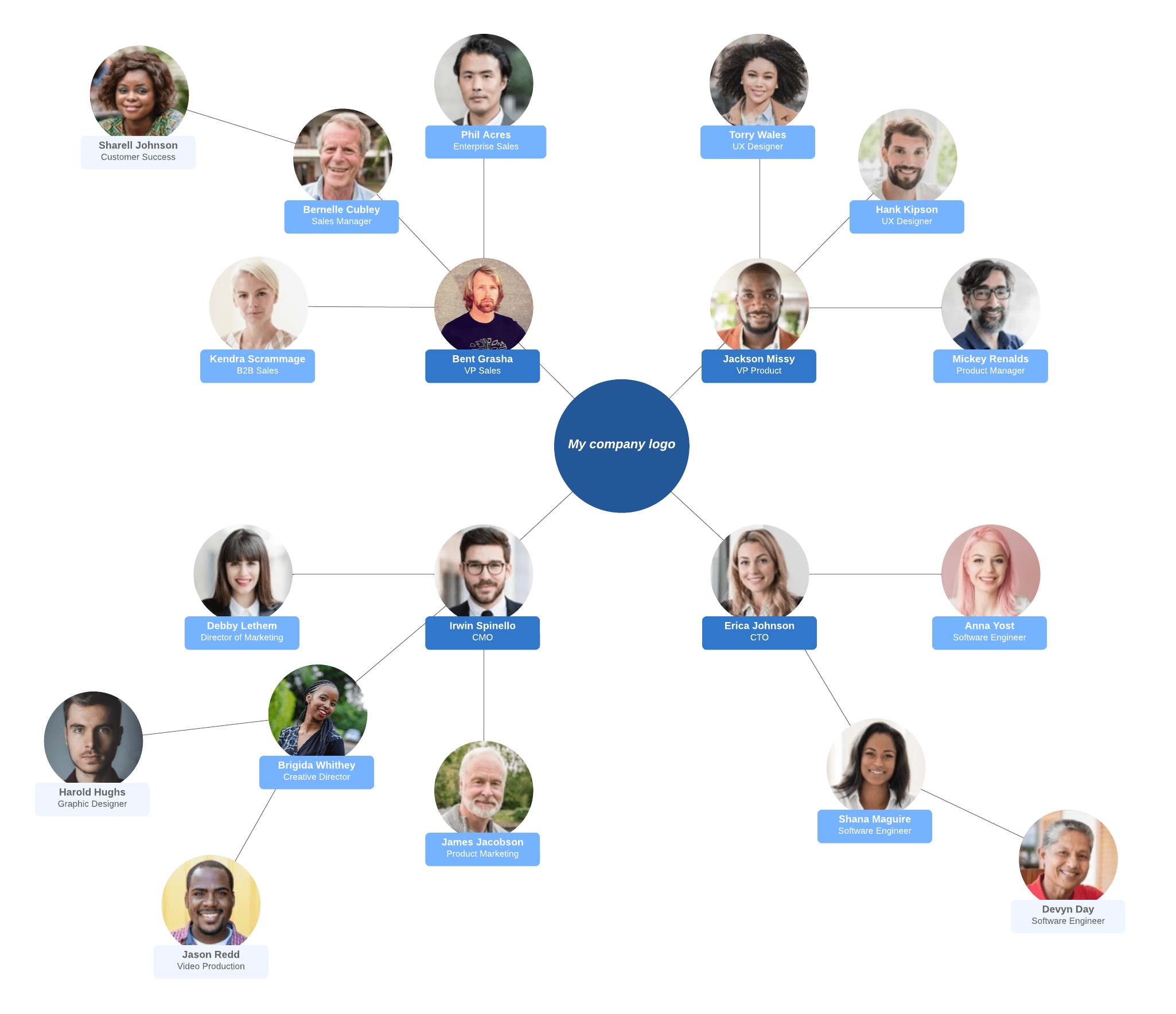
A circular organizational structure puts leaders of the organization at the center rather than the top so they can share information outward rather than pass it down a chain of command. Employees in different departments are also seen as part of a larger whole rather than siloed off by department.
Pros
- Promotes the flow of information across the organization
- Promotes communication and collaboration between employees and departments
Cons
- Can cause confusion around who to report to, especially for new employees
- Can take longer to make decisions
10. Line structure
A line structure is one of the simplest organizational structures as authority flows from top to bottom. Each department is ran by a manager and works toward a common organizational goal.
Pros
- Reporting structure is clear
- Stable environment
Cons
- Can be inflexible
- Can limit innovation and specialization
- Can lead to managers having a lot of power

Once you've chosen the right org structure to pursue, learn the steps in the company reorganization process.
Read moreAbout Lucidchart
Lucidchart, a cloud-based intelligent diagramming application, is a core component of Lucid Software's Visual Collaboration Suite. This intuitive, cloud-based solution empowers teams to collaborate in real-time to build flowcharts, mockups, UML diagrams, customer journey maps, and more. Lucidchart propels teams forward to build the future faster. Lucid is proud to serve top businesses around the world, including customers such as Google, GE, and NBC Universal, and 99% of the Fortune 500. Lucid partners with industry leaders, including Google, Atlassian, and Microsoft. Since its founding, Lucid has received numerous awards for its products, business, and workplace culture. For more information, visit lucidchart.com.
Related articles
Org chart templates and examples
Need to create an organizational chart to define roles and responsibilities within your group? Get started with these org chart templates and examples! You'll also learn how to create an org chart in Google Docs and how to automatically import org charts with Lucidchart.
How to make a flowchart in Google Docs
Learn how to make a flowchart in Google Docs and help collaborators understand ideas, information, and processes quickly. We'll walk through the process of creating a flowchart with Google Drawings and with the Lucidchart add-on.
All about matrix organizations
Learn all about structuring matrix organizations and how they can benefit your team.
